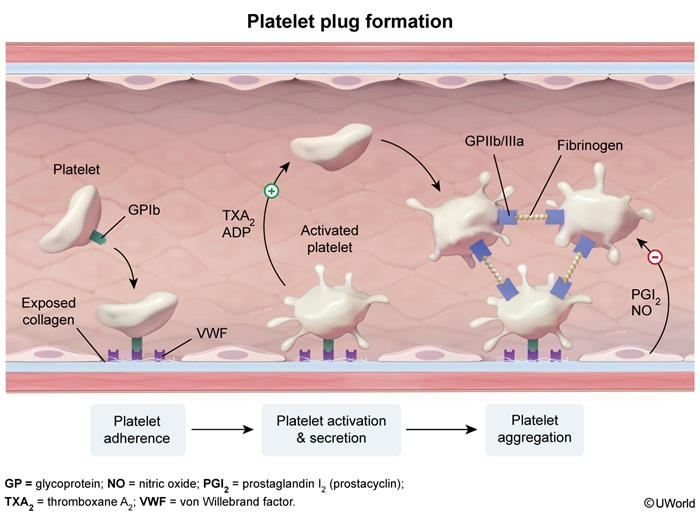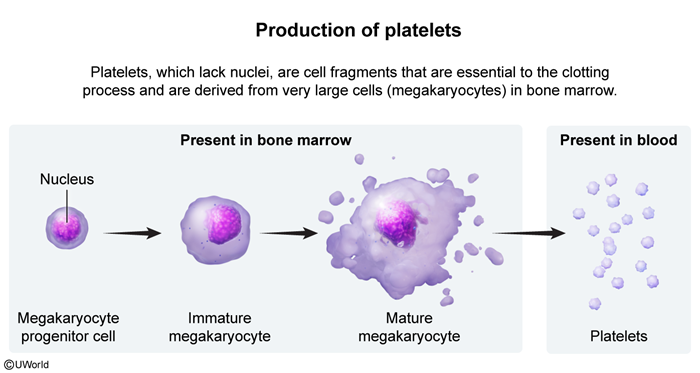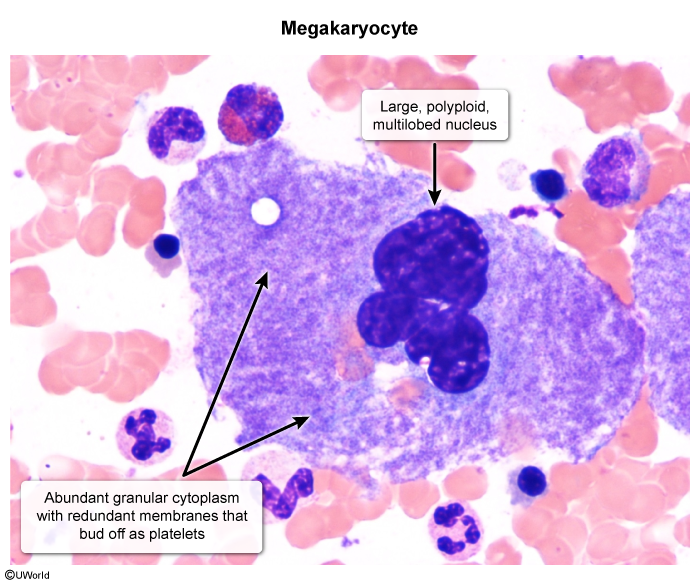Thrombocytopenia: An Overview
Article Sections
Introduction
Thrombocytopenia (measured platelet count <150,000/mm3) generally occurs due to decreased platelet production, increased platelet destruction, platelet sequestration, or platelet dilution, depending on the underlying pathophysiology and its associated clinical findings.
Pathophysiology
Platelets (thrombocytes) are cell fragments that initiate hemostasis following endothelial injury. During the first phase of hemostasis (primary hemostasis), a platelet plug forms, as follows (Figure 1):
- Platelet adhesion (adherence): Endothelial injury exposes connective tissue that contains von Willebrand factor (vWF), a protein that facilitates platelet adhesion to subendothelial collagen.
- Platelet activation: Adhesion induces platelet activation, a process in which the platelets undergo irreversible changes, developing a spiky shape and secreting:
- ADP: ADP induces further platelet activation.
- Arachidonic acid: This acid is converted to thromboxane A
Continue Learning with UWorld
Get the full Thrombocytopenia: An Overview article plus rich visuals, real-world cases, and in-depth insights from medical experts, all available through the UWorld Medical Library.
Figures

Figure 1

Figure 2
Images

Image 1
Tables
Table 1
Table 2
Table 3